Sponsored by Battle Quest Comics
By Brian Hibbs
Sorry if you missed me, but man does writing that NPD BookScan column take a lot out of me!
Nearly everything about how Direct Market comic book retailers do business changes yet again, in our ongoing chronicle (“part one” is here while “part two” is here with “part three” here) This time our lede is about how Diamond has announced a new Terms of Sale. The numbers just look worse with every new change, and Diamond didn’t change the things that I think most retailers actually are concerned about the most (like shipping costs)
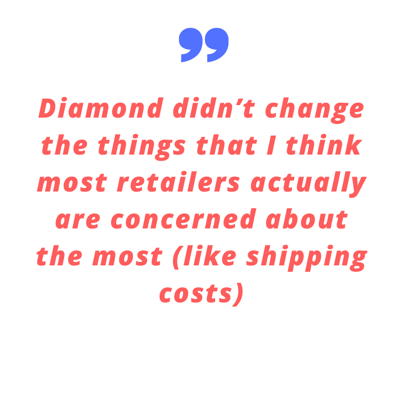
That’s just part of it too, another part is the costs of doing business locally. In San Francisco I have a considerably larger rent-per-square foot of many other locales, and our labor costs are considerably higher (Minimum Wage as I write this is $16.32 in San Francisco, and is rising 4.1% to $16.99 as of July 1st – and we are not a “minimum wage” job!)
Comic book stores are also extremely limited on the costs of most new goods that we’re selling because both periodical comics and graphic novels have physical prices printed directly on them. It is not possible for us to charge more than those physical prices, and they also do not in any way rise in direct relationship to how our underlying costs do.
The long and short of it is that I have calculated that I, in San Francisco, are now essentially doing no better than breaking even selling new comics material if we’re not getting at least a final effective discount of at least 45%. And as that discount drops below 40%, we are actually losing small sums by carrying those products, even if we sell 100% off what we order. Your “effective discount” is not just the cost of the product itself, but also the shipping you are paying.
Actually figuring out your shipping can be trickier than it looks because Diamond does not break down your shipping costs tied to specific weights and boxes, and they charge you shipping at least a week in abeyance (perhaps more, some weeks – it’s utterly opaque). Because of the way that Diamond reports this information to us, it is extremely difficult to figure things out, but it certainly appears to most observers that Diamond makes a direct profit from the cost of shipping charges themselves, and that it is not merely passing on 1:1 costs. This is a thing that retailers have been trying hard to change for decades now, to little avail. Either way, the fairest possible way to try to determine your shipping charges is to average them out over a wider time horizon. I regularly run both quarterly and annual calculations just to be safe, but the statements in today’s article are from running the combined last six weeks of invoicing (the quarterly numbers are pretty close to exactly the same)
And in that time frame, I have been paying an average of 7.8% of cover price in shipping to Diamond. To give a comparison of some kind, the same calculation for shipping from Lunar (DC’s exclusive periodical distributor) is just 3.2% of cover price.
Here’s the rub, however: products ordered from “book market” primary sources are almost always free shipping. Ordering from other book wholesalers like, say, Ingram, can have shipping, but it’s harder to have a meaningful calculation because it is a fixed dollar amount per shipment — but there can be a huge variability in how many books (and at what price) are in a “shipment”. My general result is approximately 2.1%, however.
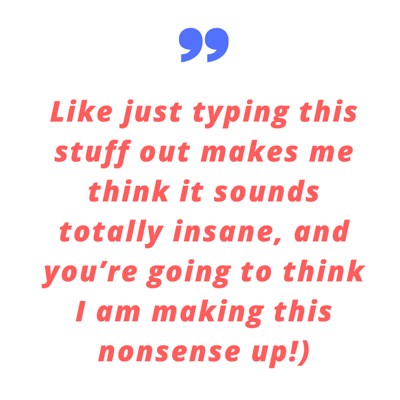
One further wrinkle: Diamond charges a 3% “reorder penalty” on all product — however, Image, Dark Horse, Boom and Dynamite (only) absorb that cost directly themselves. You would be fair in asking what’s the practical difference between an “initial order” and a “reorder”, because the answer is pretty much “none whatsoever”, but this is how Diamond has operated for forty years now, and this is a path that all of the “premiere” publishers didn’t try to get them to change over those decades. This is, as you can reason, especially pernicious on the “back of the book” publishers – but the largest ones had no specific reason to try to fix things for the smaller ones.
Anyway, this is a super long way of saying that my effective discount calculations on Diamond and Lunar shipments are going to be wildly different than some/many of my peers. Some do much better than I, some do much much worse. If you want to keep one thing in mind as you read the rest of this, it is that we (Comix Experience) can’t do better than break even once we drop below 45%.
There is at least one more layer of stupid opaqueness in Diamond’s historical terms, and it is that the discount a store gets is determined by a letter-driven “discount code”. For example, an “E” discount publisher is assessed at “Lower of 50% or Standard Discount”, while an “F” discount publisher is “Lower of 45% or Standard Discount”. There are sixteen different letter codes, but if that’s not nearly confusing enough, add in that there are actually three distinct versions of the “D” discount: one for Dark Horse, one for Image, and one for Diamond.
(Like just typing this stuff out makes me think it sounds totally insane, and you’re going to think I am making this nonsense up!)
OK, to get into that, we now need to define what “Standard Discount” is. It used to be, many many years ago that your “Standard Discount” was actually called the “D” discount, and it was calculated by the sum of what you ordered from the “front section” of “Previews” (that is to say: Marvel, DC, Dark Horse, Image, IDW, Boom! and Dynamite) – in other words, since the majority of stores ordered the majority of their products from those “Premiere” publishers, that was the baseline as to how they calculated your “Standard Discount”. Today, however…. Well, let’s use Diamond verbiage: “Diamond set longtime retailers’ Standard Diamond Discount at the average earned discount achieved from February 2006 to July 2006. Newer accounts receive a Standard Diamond Discount based upon their estimated PREVIEWS order average”
Now, I’ve been selling comics since 1989, so at this point I have a hard time remembering exactly what triggered what change in any given year, so I don’t remember precisely why it was 2006 business exactly that has determined those “grandfathered” discounts (Something to do with Marvel, most likely), but the net result is that the large majority of comic shops that opened in 2006 or earlier (sixteen years ago, by the way!!!) had their “Standard Discount” locked in at 55%, while large regional chains or mega-retailers were able to get up to as high as I want to say 59%. I have been a “55%” account, though in many many many ways this is utterly useless in the year 2022 because other than Image and Dark Horse the highest any other pub gets (and even those are rare) is “E: “lower of 50% or Standard Discount”, in other words discounts essentially cap at 50%, regardless of your grandfather status.
(If running through the back of your mind right now is the principle of “K.I.S.S.”, or “Keep It Simple, Stupid”, you are far from alone)
In talking to a sampling of stores who opened after 2006, I’ve yet to find one that didn’t get assigned a 50% “Standard Discount” (if you are a store, you can check yours by clicking here… but that link is only for folks with Diamond accounts) – this doesn’t mean that there are stores that haven’t been able to get more, just that I don’t know who they are, because Diamond should change their name to “Opaque”
Right, so, to summarize: stores before 2006 are probably getting a base discount of 55% on Image and Dark Horse, while some are possibly getting as high as 59% on those two – I have confirmed at least one store who is getting 58%. But on all other publishers, because of the “E” discount, and for stores who opened after 2006, things max out at 50% from Diamond.
And, like I said, minus another 3% for reorders from anyone who isn’t Image, Dark Horse, Boom! or Dynamite.
- DC Comics can not be ordered from Diamond (and, really and truly, every problem the DM faces right now is a direct result of DC entirely pulling out of Diamond two years ago) – DC’s periodicals must be ordered only from Lunar (who, never ever forget, is the #1 competitor of each and every comic book shop in America, as Discount Comic Book Services), but DC graphic novels can also be ordered from Penguin Random House (PRH). Lunar also uses their own sliding scale based on volume for discounts; this second we are also 55% at Lunar.
- Marvel and IDW are distributed by PRH. You can buy them from wholesaler Diamond however, at a lower discount (i.e. higher price). PRH also distributes the periodicals from those two publishers (only), and is the primary book (only) distributor for a range of publishers including (but not limited to) Archie, DC, Dark Horse, Kodansha, Nobrow, Seven Seas, Square Enix, Titan and Wizards of the Coast.
- No one else distributes periodicals currently, than Diamond, Lunar (DC, Ahoy, CEX, Floating World, Merc, Oni, Scout, Silver Sprocket, Vault and Z2) and PRH (Marvel & IDW), but to buy Graphic Novels, you could go to any of the below
- Simon & Schuster for (among others!) Ahoy, Andrews McMeel, AWA, Behemoth, Black Mask, Boom!, Devil’s Due, Heavy Metal, Humanoids, Keenspot, Legendary, Mad Cave, Oni, Rebellion, Red 5, Scout, Skyhorse, Source Point, TKO, Vault, Viz and Z2.
- Hachette for Abrams, Chronicle and Yen, among others.
- Macmillan for Bloomsbury, Drawn & Quarterly, and Papercutz
- Super obviously, PRH also distros all Penguin and Random House owned imprints (full list – there are 275 of them!), Simon distros the ones they own (full list), same with Hachette, HarperCollins, and Macmillan. And of course you can buy Graphix and Scholastic directly from Scholastic, as well. Each and every one of the distros listed in this paragraph have a non-returnable 50%-off and free shipping scheme, usually for very very small orders.
One is forced to use Diamond for all products from (among others) Image, Dynamite, Ablaze, Aftershock, Valiant and Zenescope, but super generally one has a lot more options for anyone you won’t find in that link.
OK, that was a pretty big data dump, and we still haven’t quite gotten to the impetus for this specific column, which is Diamond’s new Terms of Sale!. Really, there are only two meaningful changes. The first is that “Standard Discount” has been directly decoupled from the “D” discount – Dark Horse and Image can set their own “D” discount now, though there is no current direct evidence that they’re changing anything specific at this time – while Diamond’s “D” discount is now exclusively for PRH-distro-ed titles, which is to say Marvel, IDW, Ghost Ship, Kodansha, Nobrow, Seven Seas, Square Enix, Vertical, and every PRH owned imprint on this list. This “new” “D” discount “will be calculated on a quarterly basis and will be based on the total of the prior 12 months’ product invoicing”. Diamond does not yet have the actual tool to see how they calculate it available to us, but if I am reading the chart correctly, I am going to drop to a 44% base discount on these PRH-distro books.
So, what the heck does this mean for the working retailer, then? Well, in my specific and individual case, it means these are what effective discounts (base minus shipping) now are:
“Big Two”
MARVEL (From PRH)
Base Discount: 50%
Effective Discount: 50%
MARVEL (From DCD):
Base Discount: 44%
Effective Discount: 36.2% — a 13.8% difference!
MARVEL reorders (From DCD):
Reorder Discount: 41%
Effective Discount: 33.2% — a 16.8% difference from PRH!
DC all (From Lunar)
Base Discount: 55%
Effective Discount: 51.8%
DC graphic novels (from PRH)
Base Discount: 50%
Effective Discount: 50%
******
“FRONT OF THE CATALOG” pubs
Diamond PREVIEWS (below 20 copies)
Base Discount: 40%
Effective Discount: 32.2%
IMAGE (From DCD)
Base Discount: 55%
Effective Discount: 47.2%
DARK HORSE comic books (From DCD)
Base Discount: 55%
Effective Discount: 47.2%
DARK HORSE graphic novels (From DCD)
Base Discount: 52.5%
Effective Discount: 44.7%
DARK HORSE graphic novels (from PRH)
Base Discount: 50%
Effective Discount: 50%
BOOM! (from Diamond)
Base Discount: 50%
Effective Discount: 42.2%
BOOM! graphic novels only (From Simon & Schuster)
Base Discount: 50%
Effective Discount: 50%
DYNAMITE (From DCD)
Base Discount: 50%
Effective Discount: 42.2%
IDW (From DCD)
Base Discount: 44%
Effective Discount: 36.2%
IDW reorders (From DCD)
Reorder Discount: 41%
Effective Discount: 33.2%
IDW (from PRH)
Base Discount: 50%
Effective Discount: 50%
********
“Back of the catalog” publishers
“D” discount publishers (From DCD) — this is solely for PRH-driven publishers
-FRONTLIST Base Discount: 44%
-FRONTLIST Effective Discount: 36.2%
-REORDER Discount: 41%
-REORDER Effective discount: 33.2%
These Same pubs from PRH
Base Discount: 50%
Effective Discount: 50%
********
“E” Discount Publishers (from DCD) — includes Ablaze, Action Labs, Aftershock, Albatross, Antarctic, Archie, AWA, Fantagraphics, Gemstone, Magnetic, Oni, Titan, Valiant, Vault, Viz
-FRONTLIST Base Discount: 50%
-FRONTLIST Effective Discount: 42.2%
-REORDER Discount: 47%
-REORDER Effective discount: 39.2%
Behemoth, Legendary, Oni, Vault, Viz (Books only) (from Simon & Schuster)
Base Discount: 50%
Effective Discount: 50%
Archie & Titan (Books Only) (From PRH)
Base Discount: 50%
Effective Discount: 50%
Oni & Vault (not limited to GNs) (from Lunar)
Base Discount: 50%
Effective Discount: 46.8%
********
“F” Discount Publishers (From DCD) — Includes Abrams, Ahoy, Behemoth, Black Caravan, Blood Moon, Caliber, CEX, Clarion, Clover, Coffin, Drawn & Quarterly, Etch, FirstSecond (and all other Macmillan owned imprints), Floating World, Graphix (Scholastic), Harper, Henry Holt, Heavy Metal, Houghton, Humanoids, Legendary, Mad Cave, Microcosm, NBM, Opus, Papercutz, Rebellion, Red 5, Scout, Silver Sprocket, Source Point, Tokyopop, Uncivilized, William Morris, Yen, Zenescope
-FRONTLIST Base Discount: 45%
-FRONTLIST Effective Discount: 37.2%
-REORDER Discount: 42%
-REORDER Effective discount: 34.2%
Ahoy, Behemoth, Black Mask, Devil’s Due, Heavy Metal, Humanoids, Mad Cave, Red 5, Scout, Source Point, TKO (Books only) (from Simon & Schuster)
Base Discount: 50%
Effective Discount: 50%
D&Q, First Second, Henry Holt, Hill & Wang, Papercutz, other Macmillan owned imprints (From Macmillan)
Base Discount: 50%
Effective Discount: 50%
Graphix & Scholastic (From Scholastic)
Base Discount: 50%
Effective Discount: 50%
Abrams & Yen, other Hachette owned imprints (From Hachette)
Base Discount: 50%
Effective Discount: 50%
Clarion, Etch, Harper, Houghton, William Morris, other Harper-owned imprints (From HarperCollins)
Base Discount: 50%
Effective Discount: 50%
Ahoy, CEX, Floating World, Scout, Silver Sprocket (not limited to GNs) (from Lunar)
Base Discount: 50%
Effective Discount: 46.8%
********
“H” Discount Publishers (From DCD) — Includes Avatar, Boundless, Dynamic Forces, TwoMorrows
-FRONTLIST Base Discount: 40%
-FRONTLIST Effective Discount: 32.2%
-REORDER discount: 37%
-REORDER Effective discount: 29.2%
“I” discount publishers (from DCD) — Includes Taschen
-Base Discount: 35%
-Effective Discount: 27.2%
(Diamond doesn’t charge the 3% on reorders for “I” pubs!)
These are always cheaper from Ingram!
*****************
So! What’s the takeaway from this? Well, for me and in my situation, I can affirm that buying most anything from Diamond, after having to pay their truly usurious shipping costs, means that staggeringly little of it can possibly be profitable for us.
And that while, on paper, Image gives us the best discount of any publisher, we’re only a bit over break even once those shipping costs get factored in. And, further, I get a better effective discount on virtually any graphic novel that I am able to buy from any “bookstore”-distributed publisher than I can from Image.
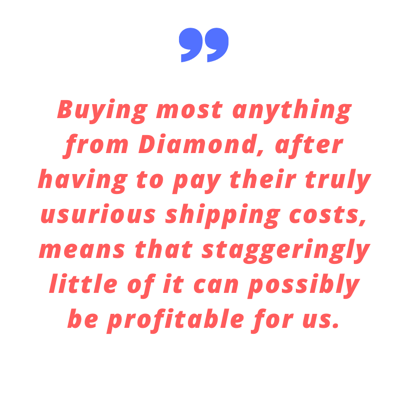
It says to me that we have to sell more graphic novels from publishers that are distributed by anyone other than Diamond, and this suggests to me that Diamond has almost no future that isn’t spiraling their business down to nothingness unless they are able to address their shipping problem. Especially as they are poised to hack three to ten base discount points from the overwhelming majority of stores that have been hanging on to buy Marvel comics from them.
I don’t especially like the way that PRH handles periodicals, or data, or FOC or how they pack, or any of a number of other problems, but given the straight 50% discount and free shipping, we’d be better off for almost every periodical comic if PRH started sweeping up publishers left and right. I also think that if PRH can be profitable distributing comics at 50%-off and free shipping, then Diamond is truly taking advantage of DM retailers… and has been for decades.
Something needs to change, and the writing is on the wall. I hope Diamond steps up the way they need to.
**********************
OK, one last thing before I close this month out, and it is something that probably isn’t a full column of its own, so I will tack it on here: there is a legitimate paper and printing shortage, but not all publishers are dealing with it equally… especially when it comes to Final Order Cutoff and the timings there of.
FOC was created by Marvel to allow us to order comics right up to the very day before orders were due at the printer. This was Marvel’s way of getting around having to make comics returnable under any circumstances, do not forget.
For standard format comics, FOC has always been just three weeks before print date for all publishers – this allows us to have a week’s worth of sales on the current issue before we have to place our non-returnable order for the next issue. It is, I think, one of the few things that makes ordering periodicals at all viable as variant covers and line expansions have exploded over the last decade.
However, once Marvel moved to PRH, that line started changing, and now most Marvel comics are four weeks from shipment, not three. This radically increases the retailer’s risk. PRH is doing the same for the IDW books they’re now soliciting as well.
But even worse is that over the last few week’s Marvel has let that line drift further and further and further so that in the most recent order (the one that was due Mon May 16, 2022), they had books that were between four and nine weeks ahead of publication.
And next week’s Marvel comics have us placing FOC on both “Amazing Spider-Man” #4 and #6. Yes, they are insisting we FOC #6 before #5, and we’re being told we have to FOC both of those before issue #2 even arrives in stores.
This breaks ordering periodicals. Snaps it in two.

It horrifies me; and it should horrify you.
If this is how we’re expected to operate going forward, then something needs to change – I’m not ordering any meaningful number of shelf copies under these circumstances. These books need to be returnable if we’re expected to bear all of the risk for no additional rewards.
Draw the line of viability yourself between the first part of this column, and this last part – periodicals are rapidly becoming a non-viable business model thanks to usurious shipping and irrational FOC demands.
This is flatly unacceptable, and needs to change immediately.
**************************
Brian Hibbs has owned and operated Comix Experience in San Francisco since 1989, was a founding member of the Board of Directors of ComicsPRO, has sat on the Board of the Comic Book Legal Defense Fund, and has been an Eisner Award judge. Feel free to e-mail him with any comments. You can purchase two collections of the first Tilting at Windmills (originally serialized in Comics Retailer magazine) published by IDW Publishing, as well as find an archive of pre-CBR installments right here. Brian is also available to consult for your publishing or retailing program.
Sponsored by Battle Quest Comics


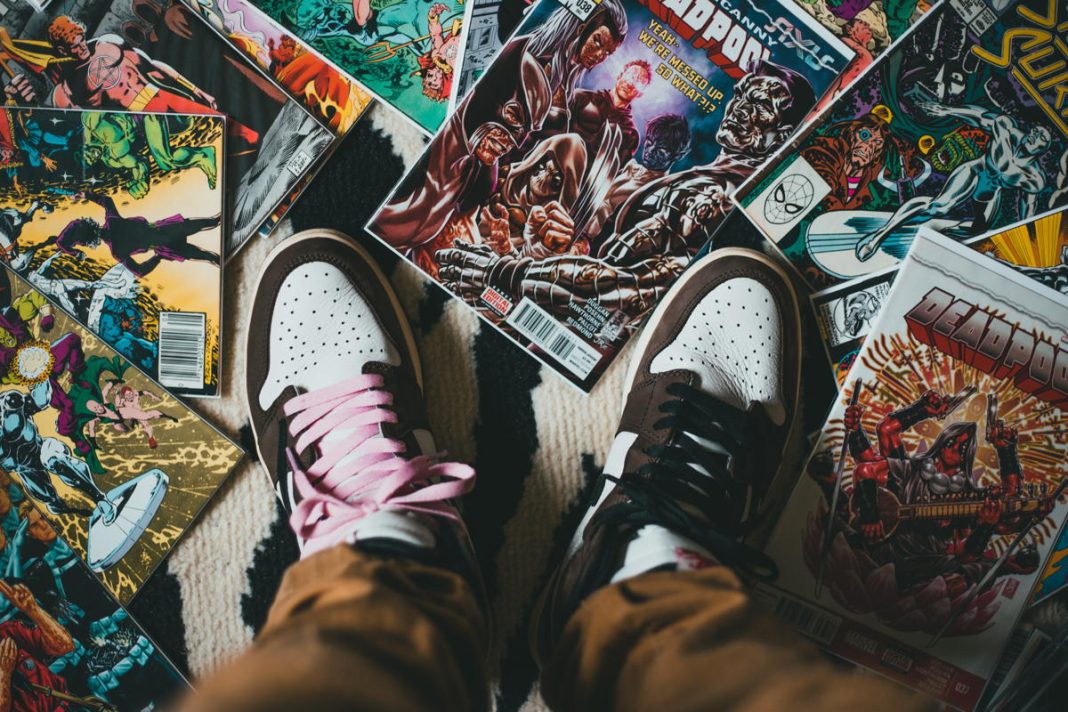
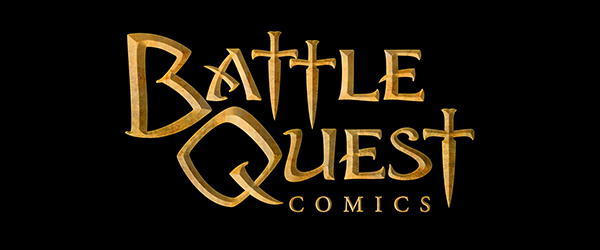
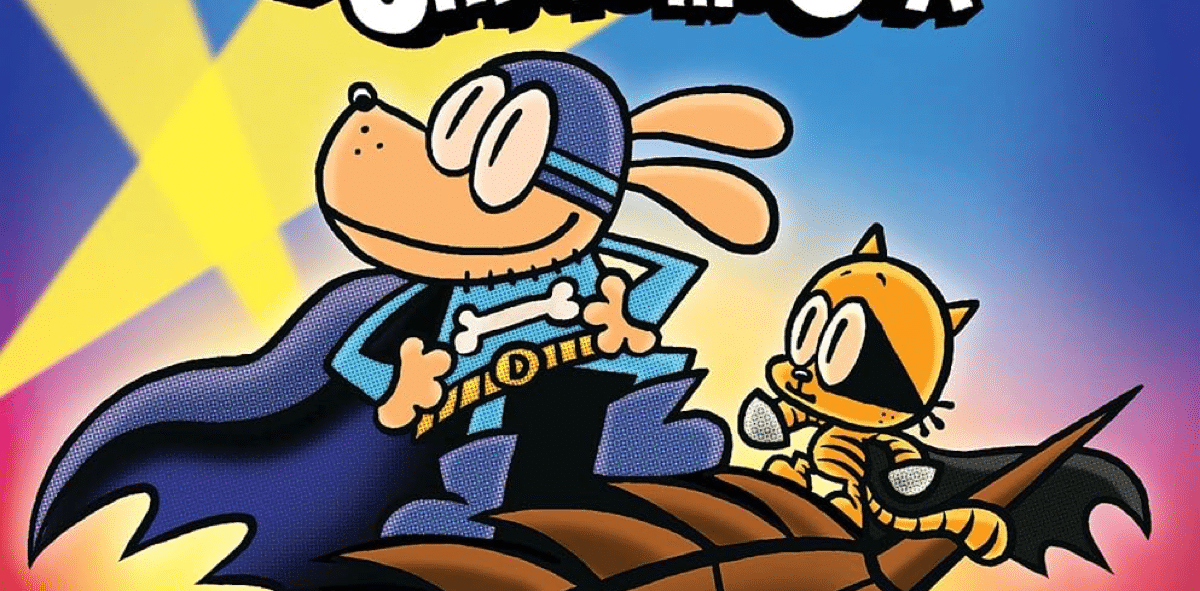
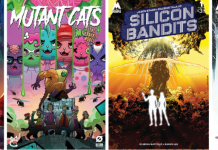
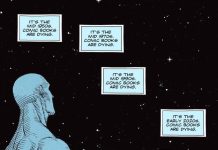




Its the definition of “Insider Baseball”!
The margins keep shrinking and rent keeps going up! All of the things you mention here were things I considered before we opened last year and played a strong part in my decision to deprioritize single issue periodicals – by far the single riskiest item to carry in comic shops currently. To even even begin to make periodicals a consideration for me so many things would have to change and I’m not sure I see the industry willing or able to do that, unfortunately.
Great thorough analysis as usual, Brian, thanks for outlining all of this. I think Marvel would have gotten their divorce from Diamond even if DC hadn’t done that first. And yes, PRH’s website and way we look up / order with them, their dumb small boxes (more damages even when they put another small box within), and their wacky invoicing methods need a LOT of revisions. Marvel’s gaming the way we usually utilize the sales data we have with their new weeks away from arrival FOCs and continuing 10,000 variants per title also are abusive.
I used to be a happy and charismatic retailer who actively looked for what comic would be the next success. Now, I have become grumpy beyond measure and I’m unable to see anything as successful or exciting.
And that’s me being in a cheerful mood describing where we’re at as a retailing being, too.
Marvel is horribly abusive. On top of the ordering far ahead, we have 4-15 (15!) covers on multiple books a month. The next month, the book that had 4 covers has 6 covers and one of them is by Superstar Artist #14 and sours the data of previous issues for any meaningful ordering. Cap it all off with poor paper quality that no other publisher seems to have and it’s making Marvel a poor choice.
We’re cutting orders, not out of spite, but because we’re seeing a lack of interest in many of Marvel (& DC’s) offerings.
Good stuff Brian. Yep, can’t have 1-stop shopping or bulk ordering at Diamond because DC set up their own little proprietary monopoly, can’t fully leave Diamond because folks like Image/Aftershock/etc. Not to mention, gas prices are up & folks are getting a little more cautious with their hard-earned dollars, so it’s a losing game to pay out more to earn less.
All 100% accurate. Marvel’s publishing is abusive, manipulate and unacceptable. Diamonds shipping is abusive as well. If we continue down this road it’s not “on no the end times” as much as a logistical impossibility for periodicals to continue as they are now. Truly unfortunate as so many people at every step in this industry (retailers, creators, publishers, distributors)absolutely love it and want it to grow not diminish.
I’m not a comics retailer, but the business world fascinates me. I found this column engrossing. Thanks for the great read!
While we will continue to order the books our customers want regardless of where we have to get them from, the publishers who have insisted on remaining with Diamond while knowing full well about the overcharging of retailers (some publishers probably even profiting from this via sweetheart deals from Diamond paid for by retailers) will continue to see sales decline. We can’t in good conscience promote them or suggest their books to fans in the same ways we do publishers who aren’t overcharging us via silent approval of Diamond.
Much like politicians who refuse to take any meaningful action out of fear of upsetting their party or their contributors, publishers have the power to force change at Diamond but (aside from those now available elsewhere) they have made the choice to not do so.
They could give Diamond an ultimatum and then follow through when Diamond refuses. They could speak out publicly about Diamond’s actions to help generate a groundswell of support for change but they have done neither because fear of repercussions outweighs doing what’s right.
So many comics over the decades have involved heroes or even just average people taking a stand and doing the right thing even when doing so is difficult or costs them in some way but those producing and distributing those same books behave as if they’ve never read one or at least have failed to learn anything from them. Instead, they choose what’s easy and convenient and that’s a shame.
As a side note to the data Brian has provided though, some of the publishers not being distributed through Lunar or PRH do have the option of selling direct to stores and we utilize that option with those publishers. To them and those with other distribution options, I salute you. You’re making the comics industry bigger and stronger each and every day just as we strive to do at our store.
For those still keeping your heads down to avoid notice while clinging to Diamond and thereby endorsing their business practices, you can still choose differently. Take a stand to help make things better instead of just hoping they don’t get worse.
@Dan Wallace – I would ALWAYS rather order direct from the publisher if possible as it’s pretty much always better for both the publisher and myself.
I will say in response to Dan Wallace (and one of the Twitter comments) that the time in dealing with separate ordering process, billing, receipt and handling, etc etc means I have a base assumption that it is costing me (ultimately) a bare minimum of a half-hour of time when you combine all of the myriad of steps. And break even just on labor here in San Francisco is therefore minimum $25/hour after matching taxes, so thus we’re looking at $12.50 in cost. Therefore, on a $300 order, that means we’re effectively losing 4.2% from having to have the second stream. YMMV. But this is WHY distributors (who are good!) is a GOOD thing, on balance. I don’t have the bandwidth to deal with a million small pubs individually.
@ Brian Hibbs – Yeah I totally get that. I’m pretty small and lower volume so it’s for sure a bit easier for me!
As Brian noted, ordering direct does involve more work but the best publishers (not all do this) offer varying perks for ordering direct. They save money by not paying a distributor however they have more labor involved in direct orders. When they split the difference in some way, both stores and publishers come out ahead. 50% off and free shipping is pretty common but some publishers do more than 50% off plus free shipping while others include free books, discounted variants, etc. to make up for the extra time cost to stores ordering direct from them.
I’ve been retailing since 2012. My DCD discount has been at 45% since the DC left since Marvel wasn’t counted towards the discount plateau.
As far as shipping goes I have been very vocal as I’ve hit upwards of 15-20% on shipping some weeks. The new replenishment system DCD has instated has skyrocketed our shipping costs I was furious at DCD when they very publicly announced shipping changes at a flat 5% then quietly walking back on it in a diamond daily.
3 different sources add lots of extra time. 3 initial orders, 3 FOCs, 3 shipment processing, 3 damages and returns, 3 sets of emails information changes to track and remember, 3 sets of shipping tracking to chase. A lot of extra work and no extra sales because of it. But the alternative is loosing profitability at the discounts and shipping? That is a lot of time that could be used to sell comics, or improve stores.
Marvel and DC have both been delaying some issues weeks at a time lately without re-FOCing them, which is completely counter to the system as it was intended.
We pay for the privilege of picking up our Diamond shipments at a drop point each week and, despite the fact that we now order Marvel, DC, IDW, most toys and merchandise, and most books that are available through book distributors elsewhere, our Diamond shipping charge is still about the same. If anything, Diamond’s shipping charges have become even more exorbitant over the last year.
We’ve been seeing the same trends via data analysis. Our business model has been built upon selling a high volume of periodicals by stocking large selection with depth. Current distribution realities are slowly turning us into a subscriptions+ a few for the shelf. This path has little growth potential.
The reality is that most comic book periodicals are a niche product that spoil like produce and the costs of carrying them should be lower than current costs.
I have a smaller setup than you, Brian and in an entirely different part of the country, but every word of this rings true for my shop as well. It’s a sad day when the least profitable thing a comic book store can sell is new comic books.
Mostly thanks to this recent change, we are looking at Diamond’s & Lunar’s graphic novel list as a way to order them on PRH and Simon & Schuster. We can’t accept the high costs of Diamond shipping when we often get only a few graphic novels inside a medium sized box. There’s hope that Diamond changes it’s method but I am skeptical.
I hadn’t realized just how bad the discounts were with pubs like IDW from Diamond. I really hope that PRH considers developing a POS software, because things are looking grim for Diamond and it looks like RMH/RMS might be on its last legs.
As an international store, I feel all of this plus our freight is between 22%-50% plus exchange rates and duty, plus higher wages and rents etc.
Fortunately, we aren’t locked to cover price thanks to the exchange, but often explaining why the exchange rate you see on the news doesn’t match the shelf rate is a pain.
Something is going to have to give.
This isn’t a sustainable business model any longer. Long term retailers like Brian (I’ve been doing this for almost 20 years myself) will shift their business model to suit, as they’ve done before. They will survive. But many won’t, and many fans will miss out, many publishers will struggle. I think Diamond is the first (but not only) link that is in serious danger here, and I see little evidence that they are making changes or preparation to shift into a safer spot.
Diminishing margins just shifts more and more risk to independent retailers. Already, almost all market research and marketing is shifted to retailers with no help other than a few free posters and some downloadable images.
For a company like Disney to do this is mind boggling. Could you imagine if they did no marketing for Thor Love and Thunder other than emailing a YouTube link to cinemas? Expect each local cinema manager to arrange an appearance of Taika or Hemsworth themselves? That’s what’s happening with comics, and the y are cutting our margins and making us guess our non returnable orders with even less data.
And let’s not even start on the hours lost to ordering from multiple different places
Retailers do not get enough credit for the sweat equity they put into making the comics industry actually “work”
I became aware of the atrocious Diamond percentages that you cite in January while doing year-end calculations. One thing left out – Diamond ships us boxes of sh%t we did not order constantly, such as bundles of 50 cent introductory issues of books we don’t carry, and left over dead stock ensuring extra shipping charges.
Diamond has twice shipped us big boxes of some other retailers exclusive cover, and they don’t have it in the system to report. Takes up my time to report and reship.
I am considering signage (a sticker on a bagged comic) that denotes a DIAMOND COMIC EXCLUSIVE and charging 15% over cover price. People will understand. Who knows? Maybe it will give the book the rarity prestige it deserves.
Diamond Shipping is at times 13% for me… Their packaging of non comic book/gn products is a margin killer and forced me to cease all those type of orders. They are cutting off their nose to spite their face at this point; considering the changes they have undergone, they should be changing to serve us better, not worse. They should be investing in Pullbox and Comic Suite. They should be charging publishers for Data management. They should be doing everything in their power to prove to the industry why they are relevant, so publishers and retailers can trust them. There is no long term vision and it shows.
Also, Marvel is challenging the purpose of FOC in every way possible. It is, as others have said, abusive. The retailer is forced to play their game and assume all the risk. Another company with no long term vision.
If it weren’t for back issue sales to customers who come in to pick up their weekly pre-orders (mostly comic collections we buy from visitors to the store), we would probably simply stop ordering anything that doesn’t come from Penguin or Lunar.
Every month we hope to see Image and Boom available from one of those two.
Thanks for the info. I used to run a comic store. Never again, and to get into it now would just be putting your neck in a noose. The problem for me is that the companies put less and less effort into the product – it’s a rare week when I find more than one US comic worth reading. I guess the effort they’re not putting into the comics, they’re putting into to screwing comic shops. Mostly I read manga these days. A subscription to shonen jump costs me $1.99 a month. Shueisha have a free app, as do many others. The rest of my comic budget goes into the book publication of my favourite mangas. I have loved US comics for many years, but all I see now is retreads of what has gone before, probably due to the fact competent creators saving their best work for for their own projects and publishers like Image and Boom who will pay them (fair) royalties. I suspect the audience for Marvel and DC are now mainly hardcore fans. Neither company can turn movie or Tv success into increased sales, unlike manga where successful anime or webtoons boost the sales of the printed items. Sad.
As a retailer, Diamond is my last resort when ordering anything. I’ll try to get it ANYWHERE else, first.
On the positive side, it looks like it won’t be digital that kills periodical comics.
As a comic buyer, I sympathize with shop owners dealing with this half-broken system. Personally I choose to pay with cash at my LCS so at least they don’t eat card processing fees.
Almost 3 decades of retailing and it has never felt this complicated or difficult. I try my best for constant hope, because I love this industry. But if distributors and publisher don’t start making changes, a lot of us are in for an abysmal future. I hate to say Marvel and DC might find there way of continuing publishing in a very different form without comic shops, but most other publishers and creators wont find their stories in physical forms without comic shops. Here goes more hope for change and the attention from those who can help make it.
We are lucky enough to carry comics and graphic novels (and some books), tabletop games, and toys & collectibles; so we are not as heavily impacted as comics-only stores. But we are carrying less and less comics with bad effective discounts. I hate having less variety on the New Comics Wall, but we can’t afford to do otherwise as these deals with publishers and distributors get worse and worse. :/
Interesting.
Comments are closed.